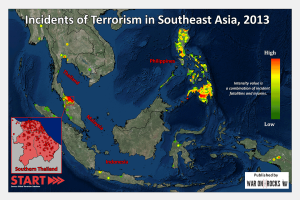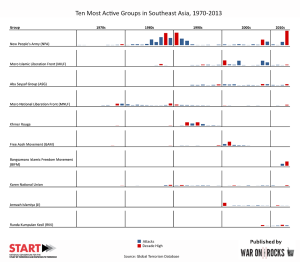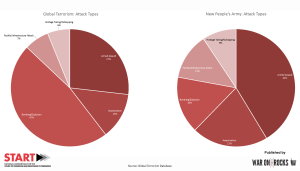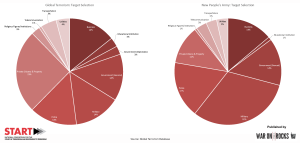Sun Star-Baguio (Jul 24): CPLA head seeks OPAPP dialogue
AS FAR as Cordillera People's Liberation Army (CPLA) chairman Arsenio Humiding is concerned, projects under the government agreement is far from being completed.
Humiding is asking the Office of the Presidential Adviser on the Peace Process to sit down and talk about the status of the agreement and see where projects have progressed.
He said the four components of the agreement between the government is comprised of CPLA integration to the Armed forces of the Philippines, community development projects, livelihood and legacy documentation.
Humiding said there is roughly P264 million bankrolling all the components released by OPAPP for CPLA projects in 2011 and from which projects have yet to be completed.
The funding was sourced through the Disbursement Acceleration Program (DAP).
Humiding said the Armed Forces of the Philippines (AFP) integration program and the employment of forest guards is not 100 percent completed as there are about 13 CPLA members who were not included in the 168 who went to the AFP while 325 members will be employed as forest guards under the Department of Environment and Natural Resources.
Humiding said there are forest guards who were employed only for two to three months depending on the local environment offices in the provinces.
"(As of now) we do not know the full status of the bantay gubat members," Humiding said.
For community development mostly comprised of infrastructure projects, Humiding said in Kalinga, there is a mere 50 percent completion, while projects in Ifugao are still ongoing.
Projects in Sagadanga are likewise ongoing while in Bontoc and Paracelis, all in Mountain Province, works were finished.
Abra, Apayao, and Benguet’s projects have also been completed as Humiding said these projects have been ongoi ng for three years but no reports on status of implementation.
Humiding said for the livelihood component, 70 percent has been implemented for Benguet, a 30 percent implementation for Ifugao, while Kalinga, Mountain Province and Abra has zero implementation.
Humiding, meanwhile, said the legacy-writing project, which aims to trace the history of the CPLA and its journey towards government, has not been submitted by Fernando Bahatan, although initial research has been completed.
Cordillera for peace and development
In a statement, the OPAPP said the Disburs
ement Acceleration Program (DAP) funds received by the agency supported peace and development initiatives in the Cordillera region—not rights abuses, contrary to media spins and allegations of certain groups.
"While it is true that OPAPP received DAP funds for peace and development initiatives in conflict-vulnerable and affected areas, it is malicious to say that it was used to fund lawlessness in the Cordilleras in the form of human rights abuses," OPAPP Undersecretary Maria Cleofe Gettie Sandoval said.
OPAPP reported nearly P208 million were disbursed, out of the P1.819 billion DAP funds allotted to the agency to support the implementation of the provisions of the Memorandum of Agreement signed between the government and the Cordillera Bodong Administration (CBA)-CPLA in 2011, namely: the groups’ transformation into a unarmed, socio-economic organization; final disposition of arms and forces; economic reintegration of profiled CPLA members; community development; and inter-municipal and inter-barangay development projects.
The OPAPP said, "Since the CPLA entered into a peace pact with the government, it has then transformed itself into a legal, socio-economic entity—the Cordillera Forum for Peace and Development—contributing to peace and local development."
As part of the socio-economic reintegration component of the closure agreement, the fund covered for livelihood projects, employment as forest guards or as integree into AFP, farm-to-market roads, water systems, communal irrigation systems, and community infrastructures among others through the Payapa at Masaganang Pamayanan program.
As to whether CBA-CPLA directly received funds for the said projects, Sandoval clarified "no part of the fund, in any amount, was directly given to any group."
"OPAPP is not an implementing agency. The funds were transferred to line agencies and local government units, who signed memoranda of agreements with OPAPP, to implement the projects."
Good and steady partners
Members of the CBA-CPLA share that the projects have contributed to fulfilling their ancestors' dreams for better roads, improved irrigation, shorter routes to farmlands, steadier footbridges over rivers, and access to basic services, such as health and education among others.
The group has also actively participated in the process and contributed well in bringing the peace agreement and its commitments to a proper close.
"In the past three years of implementation, members of the CBA and the former CPLA have been good and steady partners in peace-building in the region," Sandoval said.
http://www.sunstar.com.ph/baguio/local-news/2014/07/24/cpla-head-seeks-opapp-dialogue-355828
The proposed law, when enacted by Congress would create a new autonomous government called Bangsamoro will replace the Autonomous Region in Muslim Mindanao (ARMM).
In two previous workshops held in Kuala Lumpur on July 8-11 and Manila on July 18-21 where the two panels discussed differences over their respective drafts, there were major issues not settled. GPH Peace panel members reportedly walked-out from the meeting in Manila when they did not return after the short break in the morning of July 21.
Government peace panel chair Miriam Coronel Ferrer said in an interview that after the Manila meeting both panels went back to their respective principals for consultation.
The government peace panel met with President Aquino Monday afternoon for two hours to discuss the BBL’s current status.
"At this point, hindi pa talaga namin masasabi that we have come up with a mutually acceptable draft that we can jointly endorse to the President together with the BTC (Bangsamoro Transition Commission)," Ferrer said, as quoted by ABS-CBN news on July 22.
“At this point parang hindi na natin makikita na maibibigay ito next week when Congress opens for the session.”
A meeting between President Aquino and MILF Chieftain Al Haj Murad Ebrahim before the SONA is not being ruled out to discuss the differences.
"It’s not farfetched that they will meet as soon as possible depending on the need kasi ngayon all the lines are open, may communication ‘yung panels, may communication with the BTC [and the] Office of the President," Ferrer said.
http://www.luwaran.com/index.php/welcome/item/1103-no-bbl-draft-bill-before-presidents-aquino’s-sona









